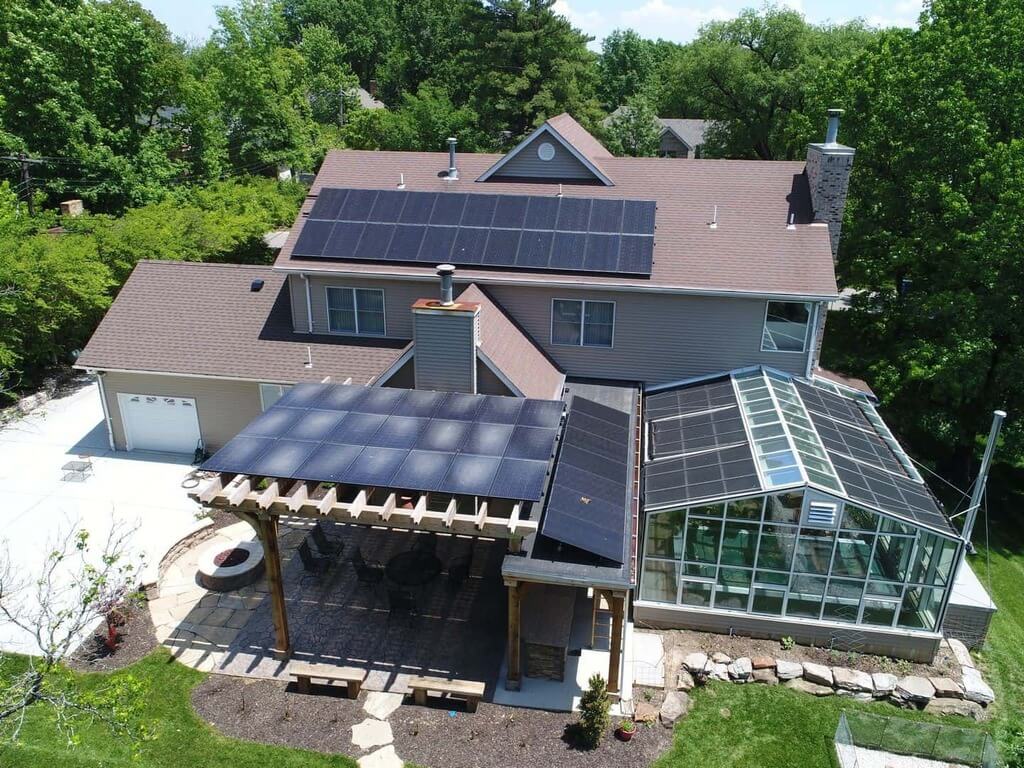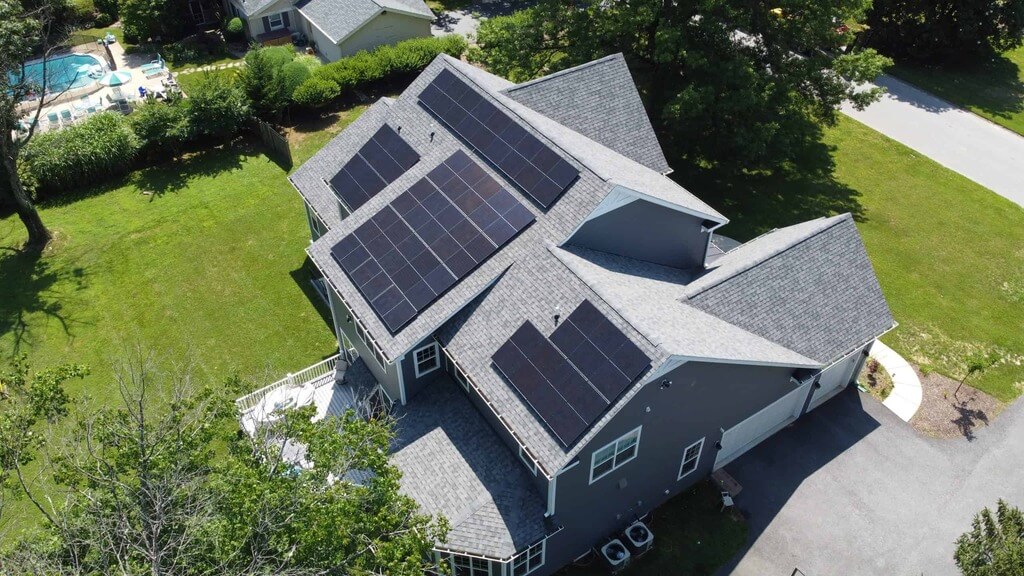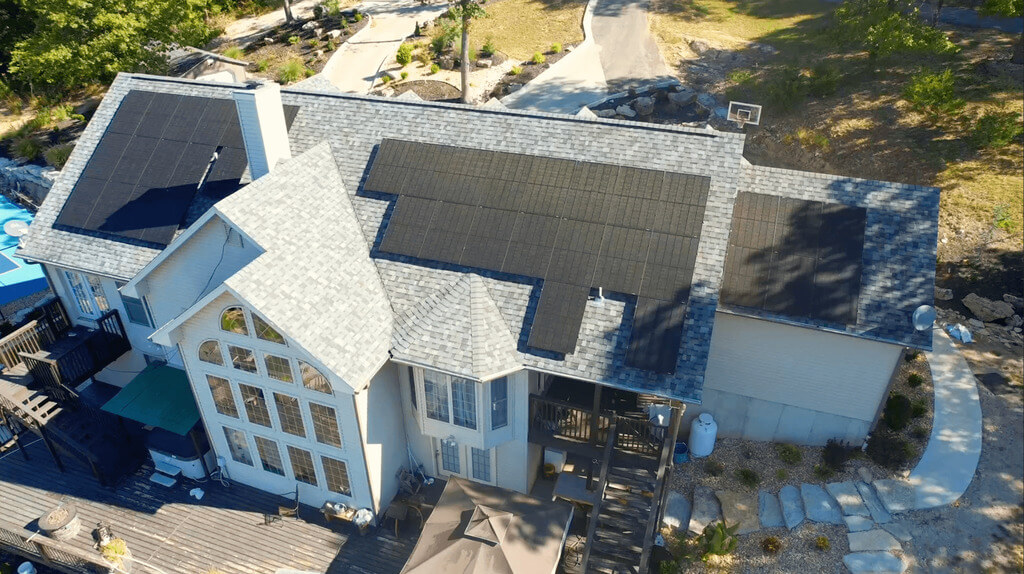Explore this post with:
The world is transitioning towards sustainable energy sources, and solar panels have emerged as a popular choice for homeowners and businesses alike. Springfield, Missouri, is no exception, with rising solar panel installations. This article will explore how solar panels can be combined with various architectural styles in Springfield to create eco-friendly roofing solutions.
Benefits of Solar Panels

Solar panels provide numerous environmental benefits, including reduced carbon emissions and decreased reliance on fossil fuels. By generating electricity from sunlight, solar panels contribute to a cleaner environment and help combat climate change.
In addition to environmental advantages, solar panels can also lead to significant economic benefits. Homeowners and businesses that install solar panels often experience reduced energy bills, as solar-generated electricity can offset or even eliminate traditional utility costs. Moreover, properties with solar panels typically have higher resale values, making them a sound investment.
Architectural Styles in Springfield, Missouri

Springfield, Missouri, boasts a diverse mix of architectural styles, including Victorian, Craftsman, Ranch, and Modern. This variety offers ample opportunities for creative and aesthetically pleasing solar panel installations.
Several local buildings have successfully integrated solar panels into their design, showcasing how solar technology can harmonize with different architectural styles. For instance, a historic Victorian home in Springfield has incorporated solar panels on its rooftop, maintaining the building’s original charm while harnessing renewable energy.
Combining Solar Panels with Different Architectural Styles

Integrating solar panels into various architectural styles does not have to compromise a building’s aesthetic appeal. With careful planning and design, solar panels can blend seamlessly with both traditional and modern elements.
Solar panels can be positioned or camouflaged to blend seamlessly with a building’s design. For instance, solar panels can be installed on flat roofs or hidden behind parapets, minimizing their visual impact. Additionally, building-integrated photovoltaics (BIPV) can replace conventional building materials, such as glass or roofing tiles, providing a sleek and modern appearance.
Solar panels can be installed in locations that are less visible from the street or positioned at angles that align with a building’s roofline to minimize visual impact. Solar panels can sometimes be mounted on pergolas, carports, or other structures to preserve a building’s original appearance.
Sustainability and Green Building Practices

Solar energy is a key component in sustainable architecture, enabling structures to generate power and minimize carbon emissions. Consequently, solar panels are becoming a staple in eco-friendly building designs, prioritizing reduced environmental impact and optimal energy efficiency.
Here are some key points:
- Solar energy contributes significantly to sustainable architecture.
- Green building designs are increasingly integrating solar panels.
- Net-zero buildings aim for equal energy production and consumption.
- Solar panels and other renewable energy sources help achieve net-zero energy consumption.
- Building-integrated photovoltaics (BIPV) offer a seamless approach to incorporating solar panels into a building’s design.
Net-zero buildings strive to generate the same amount of energy they use, often relying on solar panels and other renewable energy technologies. By incorporating energy-efficient design and solar panels, both homeowners and businesses can work towards attaining net-zero energy consumption, thereby enhancing sustainability.
Building-integrated photovoltaics (BIPV) represents a cutting-edge method of integrating solar panels into a building’s design. BIPV systems substitute traditional building materials with photovoltaic modules, enabling the structure to produce electricity while preserving a sleek and contemporary appearance.
Resources and Incentives

Various incentives are available for installing solar panels in Springfield, Missouri. Federal tax credits, state rebates, and local incentives can significantly reduce the upfront costs of solar panel installations, making them more accessible to homeowners and businesses. Researching and taking advantage of these incentives when considering solar panel installations is essential.
Highly rated solar panel installation companies in Springfield can help homeowners and businesses with their solar projects. These professionals offer valuable guidance, expertise, and resources to ensure a successful and aesthetically pleasing solar panel installation.
Helping Homeowners Made the Right Decisions

Incorporating solar panels into different architectural styles in Springfield, Missouri, offers numerous environmental and economic benefits. By considering solar energy as part of their building practices, homeowners and businesses can contribute to a more sustainable community while enjoying the advantages of eco-friendly roofing.
With the support of local professionals and the availability of various incentives, the possibilities for solar panel integration in Springfield are vast and promising.
Final Words
By following these steps, you can maintain the efficiency and longevity of your solar panels, ensuring optimal performance in Springfield’s weather conditions.
Find Out More
About the Author: archistyladmin
At Architecturesstyle, we’re passionate about smart design, beautiful spaces, and practical tips that help you bring great architecture into everyday life. Whether it's modern home ideas, iconic buildings, or expert advice, our team brings fresh and useful content to readers who love architecture as much as we do.




